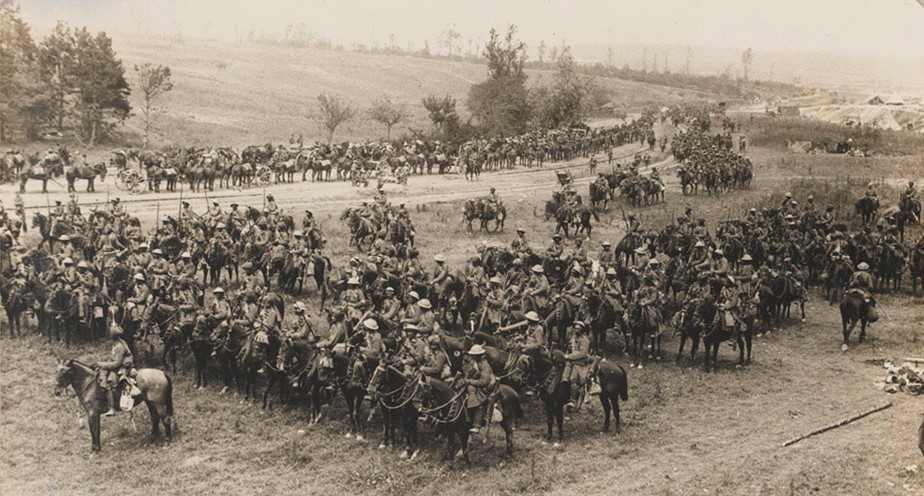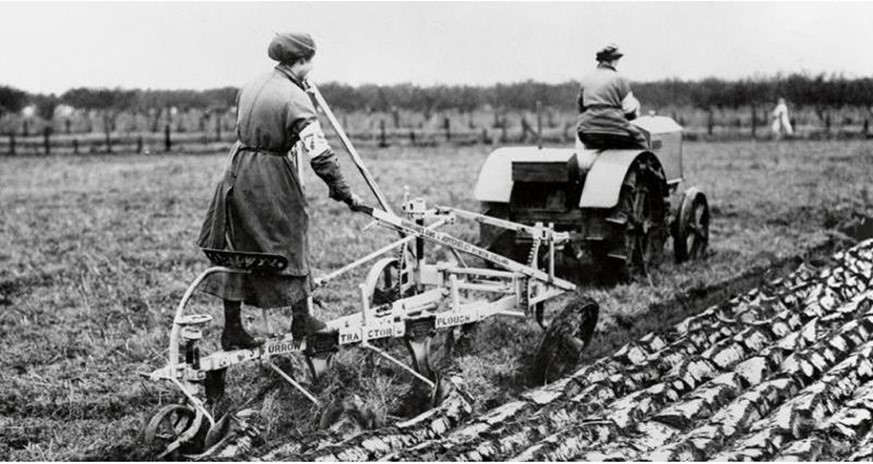How the First World War Changed British Farming Forever
ANNABEL WAILES-FAIRBURN
On Remembrance Day we think about the sacrifices made by those who fought and died, and consider the immense changes that the First World War brought to the farming industry. In this article, we examine the situation on the Home Front and the technology that drove a farming revolution over a hundred years ago.
Before War broke out in 1914, British farming was extremely labour intensive, with the majority of equipment hand-held or horse-drawn. Several skilled labourers were required to do the jobs that one person can do now. In early 1914 it is estimated that 12% of the male population worked in agriculture. Through the First World War, 170,00 farmers and farm labourers were conscripted to fight, and more than 500,000 farm horses were requisitioned by the Army and sent to the front line.
This loss of horse and man power required a dramatic change from British Farming.

Those workers who remained had more to do. The two-horse single furrow ploughs were cast aside in favour of three horse double furrow ploughs. These new bits of kit enabled some farmers to harvest 16 acres in one day, instead of 6 acres. Despite this change, Britain was still dependant on imports from elsewhere.
Pre-war Britain was 40% self –sufficient, relying heavily on imports from Europe. On the 3rd August 1914 war was announced and things had to change. Old trade routes were cut off or became too dangerous to cross. By 1916 German submarines were sinking almost 1/4 Merchant ships that were bringing food, supplies and relief into Britain. Britain had turned West to America for help, and soon relied on them for 80% of food imports, and 100% on the East and West Indies for sugar. However, in 1916 a bad harvest due to severe Atlantic storms put an end to the trade with the West. In the autumn of 1916, Britain had a mere 6-week supply of wheat. Farming had to be revolutionised otherwise the nation would starve.
1917 was a big year for change;
The Corn Production Act of 1917 guaranteed a minimum price for oats and wheat, established a legal minimum wage for those working in agriculture and started the Agricultural Wages Board which provided security to farmers and labourers. Farming thrived. The Act was repealed in 1921 without warning in the Agriculture Act to reduce the costs to the Exchequer; this became known as ‘The Great Betrayal’.
The Government supplied prisoners of war and British Soldiers to help work the fields at harvest. By harvest 1918 there were 14,000 prisoners of war and 66,000 soldiers, some of which had been sent back from the Front, working the fields. They also began to send men back from the front line who had experience as ploughmen as it was a vital and highly skilled job.
1917 also saw the formation of the Woman’s Land Army to keep producing food for the nation. By 1918, there were 233,000 women working in agriculture, 8,000 of which were in the WLA.
By 1917, nearly half on the nation’s steam-ploughs were lying unused due to the lack of farm workers. The Government bought 400 British Saunderson Tractors and they invested a further $3.2 million into American models such as Mr Ford’s Fordson tractors. By 1918 there were 6,000 tractors operating in Britain, whereas before the war it is estimated there were less than 1,000 in use. The ‘Ploughing Up Campaign’ of 1918 saw a further 2.5 million acres turn from pasture to arable with 9 million acres of land now growing potatoes and grain, producing the biggest harvest the nation had ever seen.
It was seen as the dawn of a new age of farming, as well as machinery. Tractors became more popular and as motor companies diversified to start building them. Harry Ferguson developed a keen interest for tractors during the War. He spent time travelling around Ireland teaching farmers how to use tractors and he was able to see and experience the problems personally. He went on to form Massey-Ferguson in 1953.
The War showed that with the right Governmental approach, necessity from farms, and access to the latest science and technology, farming and food production can achieve great leaps in productivity.
2020 has been a year of uncertainty with economic strain rarely seen since War time. Farming will see huge changes in the coming years as we move away from European Union frameworks. For the first time in almost half a century, the UK has the opportunity to create new legislation to propel and promote British farming.
So today we remember the sacrifice of those who laid their lives for our freedom and sovereignty. And show respect and awe for those who led such rapid and transformational change to our farming practices, which form the foundation of modern mechanised agriculture.

Sources:
Sky History, n.d. History of Horses During WWI. https://www.history.co.uk/article/history-of-horses-during-wwi
NFU, 2014. The Few That Fed The Many. https://www.nfuonline.com/nfu-online/about-us/the_few_that_fed_the_many_web/
Imperial War Museum, n.d. Voices of the First World War: Animals in War. https://www.iwm.org.uk/history/voices-of-the-first-world-war-animals-in-war
NFU, November 2016, Farming and the First World War: Women's Land Army.https://www.nfuonline.com/about-us/history-of-the-nfu/farming-and-the-first-world-war/farming-and-the-first-world-war-womens-land-army/
Farmers Weekly, March 2017. Photos: The First World War’s Women’s Land Army. https://www.fwi.co.uk/farm-life/photos-the-first-world-wars-womens-land-army